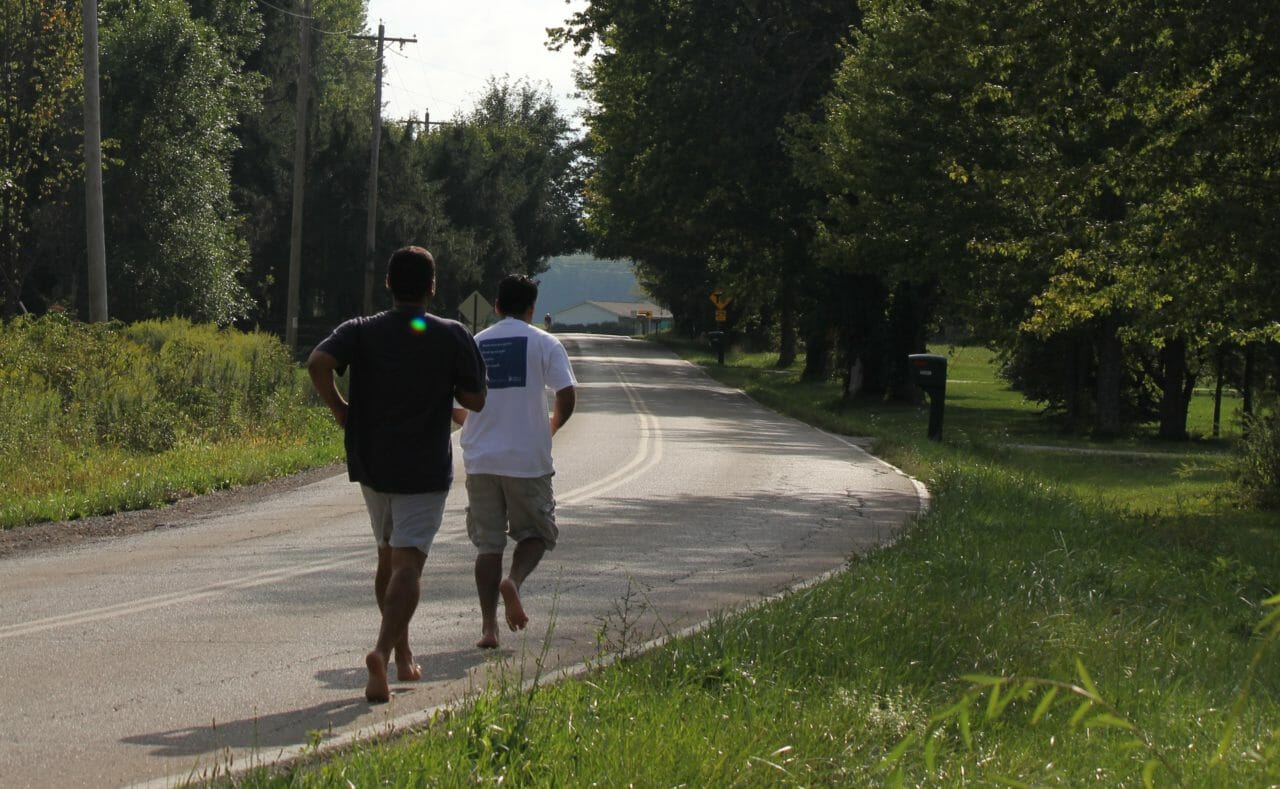In our last blog, we discussed the importance of intrinsic foot muscle strength and offered a few exercises that can help you improve it. One of the most common arenas in which intrinsic foot muscle strength is discussed, and one of the most effective activities to strengthen that musculature—if you’re feet are ready—is barefoot running.
Barefoot and minimalism running (referred to simply as barefoot running from this point on), as the name implies, is simply running without shoes entirely or with thinly soled shoes. The growing number of supporters of this style of running stand by their claim that it’s the most natural way to run, and many argue that it can even correct a runner’s form and result in fewer injuries.
The idea behind these claims is that running shoes typically cause runners to strike the ground with their heels, which over time can lead to repetitive stress injuries. Barefoot running allows runners to strike with their forefoot instead, which is a more natural motion for most runners that is believed to reduce the risk of injury.
Some studies have shown that running with less weight on the feet will increase efficiency and change the gait to a forefoot strike, and that the motion is in fact a more natural style that can strengthen the foot, ankle and legs. Unfortunately, research has not yet reached a clear consensus on the specific benefits of barefoot running. Therefore, it remains a controversial topic due to the lack of strong scientific evidence and potential risks of leaving the feet vulnerable to puncture wounds, infection and other injuries.
It appears that barefoot running may be beneficial for some, but not all people, and the best way to determine this is by trying it a few times and seeing how your body reacts. Here are some important tips to help you get started if you’re interested:
- Start out very slowly and gradually transition from running with sneakers to minimalist shoes or barefoot running; expect feet to be very weak at first
- Make your strides much shorter than your strides with shoes on
- Stay light on your feet; try not to pound the ground too hard
- Keep straight and balanced, with the feet under the hips and shoulders
- Strengthen the lower body and core with barefoot weight-bearing strength exercises; this will make the transition to running barefoot much easier
- Perform the exercises listed in our last blog to build intrinsic foot muscle strength; many people who start barefoot running with weak foot muscles aren’t used to the strain and may be at an increased risk for injuries
- If using minimalism shoes, remember that the more minimal it is, the harder the feet, ankle and legs will need to work to maintain and support the body
With the jury still out and much more research to come, barefoot running could be a viable alternative to traditional running with less injury risk; however, this has not yet been confirmed, and the benefits may vary depending on the person. If you’d like more assistance with strengthening exercises for intrinsic foot muscles or have experienced any injuries through barefoot running or elsewhere, Dynamic Sports Physical Therapy in New York City is here to help. Call us at 212-317-8303 for more information or to schedule an appointment.

